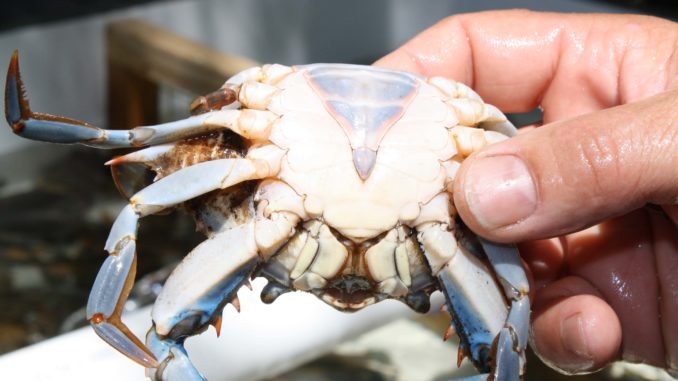
Anybody can catch hard-shelled blue crabs, but catching and bringing to market delicate, soft-shelled crabs is definitely a job for the professionals.
Soft-shell crabs are called “peelers” and “shedders.” In the spring, specifically April in most of South Carolina, crabbers utilize a specially designed crab trap called a “peeler pot,” which is a fine-wire mesh pot with one or two big male crabs, nicknamed “Jimmies,” placed inside to attract the females.
The professional crabbers inspect their catch when they pull these pots and only keep those crabs that are within five to seven days of molting. Their finely trained eyes pick up subtle changes in colors on the edge of the crab’s swimming fin that tells them when the crab will molt. If there is a pink or red line near the edge of the fin, it is within five to seven days of molting. Sometimes they catch a ready to molt “buster,” which is handled very gently.
Catching peelers is much more difficult than catching hard crabs, but easy compared to the rest of the process. Babysitting them as they evolve through the shedding process is what takes the time, talent and equipment of a professional operator like Jerry Gault of Gault Seafood on Lady’s Island. Gault catches plenty of crabs himself and also buys the harvest of many other crabbers. He places all the crabs into a large array of water tanks specifically designed to usher peelers through the shedding process. Each of the tanks has a large side where those crabs working through the process are held and a smaller side to which the “busters” are transferred when the actual molting begins. The shedding of the old shell takes only minutes once it begins, and the crabs are very fragile during the process.
Once the crab has shed its old shell, it is as soft as wet leather and very susceptible to damage. Over the next minutes to couple of hours, depending on the water temperature, the crabs’ new shells harden to the perfect texture. That’s when Jerry and his crew pluck them from the water and place them in special boxes for refrigeration and shipment.
Soft-shell crabs are big business, but very short-lived. The spring run lasts about two weeks, but a crabber can make a lot of money in that time period if he’s lucky. One crabber hauled 13,000 peelers to Gault on a single day and received a dollar apiece — not a bad day’s pay. The short soft-shell season rolls up the coast in the spring as the water warms, with the majority landed in the Chesapeake Bay area.




Be the first to comment